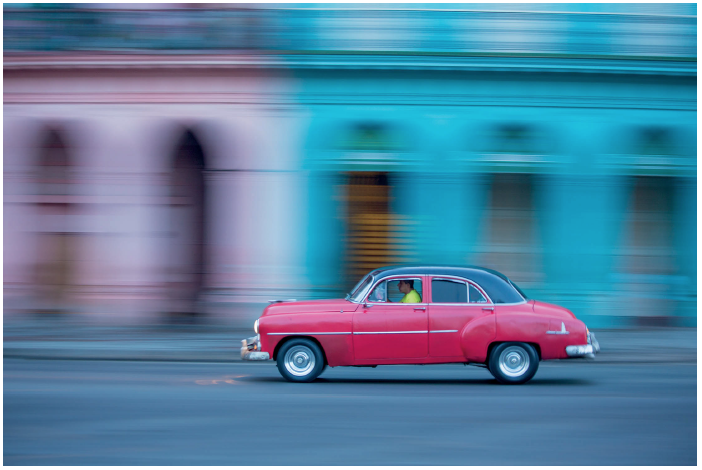
The following article is an excerpt from The Enthusiast’s Guide to Exposure by John Greengo.
TO RENDER A moving object blurry, you can use a slow shutter speed. Why would anyone want a blurry subject? There can be lots of reasons for this: to show motion, to add mystery, or to hide details. Photography is a visual art, and slow shutter speeds are one way we can choose to render a scene in a visually unique manner.
What Is a Slow Shutter Speed?
Slow shutter speeds, like fast ones, are all relative to the motion of the subject. For those who like to keep things simple, shutter speeds of 1/30s and longer can generally be considered a slow shutter speed.
With our example of the runner in the park (the one where a 1/500 froze the action), a shutter speed of 1/30s will likely result in a trail of blurred streaks where the runner moved while the shutter was open. For a very fast moving subject like a hummingbird, 1/500s may be considered slow. Once again, it’s all relative.
Subject Movement vs. Camera Movement
An important distinction between the types of blur you will get in a photo has to do with what is moving: the subject or the camera. With a camera secured to a tripod, it’s the subject’s movement that will create the blur streaks. Think of a night scene with car taillights streaking across the frame during a very long exposure. If you move the camera while set to a slow shutter speed, everything will be blurry.
The slower the shutter speed and the more movement of the camera, the blurrier the image will be.
Panning
If you move the camera to follow a moving subject, keeping it in the same location in the frame, you are panning with your subject. This is a common technique among sports and action photographers who are capturing several images in a row with the subject in about the same position in the frame. Panning with a slow shutter speed creates a distinctive look.
If a car is driving down the street and you follow it in the viewfinder, keeping it in the same location in the frame while also using a slow shutter speed, the car will be mostly sharp, but the background will be blurry. The sharpness of the car will depend on how precisely you are able to match your panning motion with that of the car. The blurriness of the background will depend on what shutter speed you have chosen and how fast you move the camera.
These slow shutter speeds combined with panning can result in some interesting photos and can be a lot of fun to experiment with. Expect lots of mistakes. With a bit of practice, you are sure to end up with a few winners.
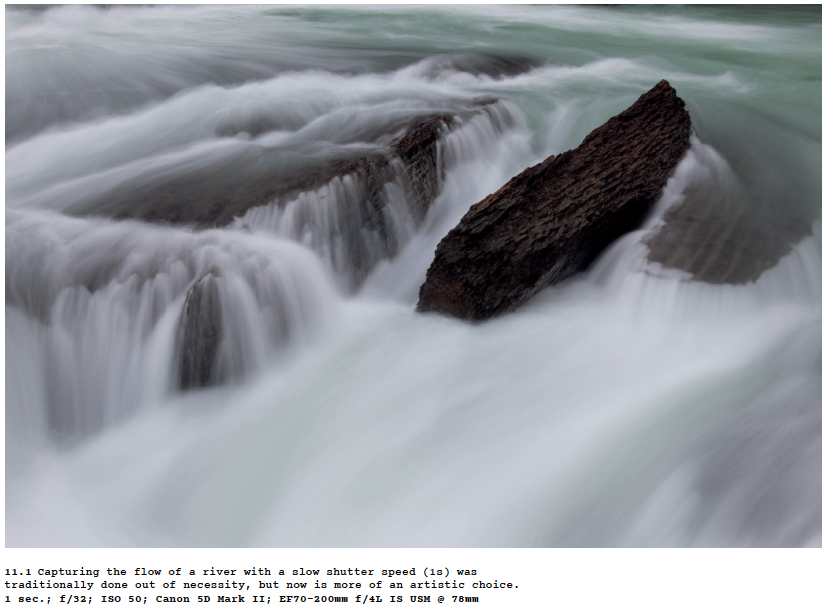
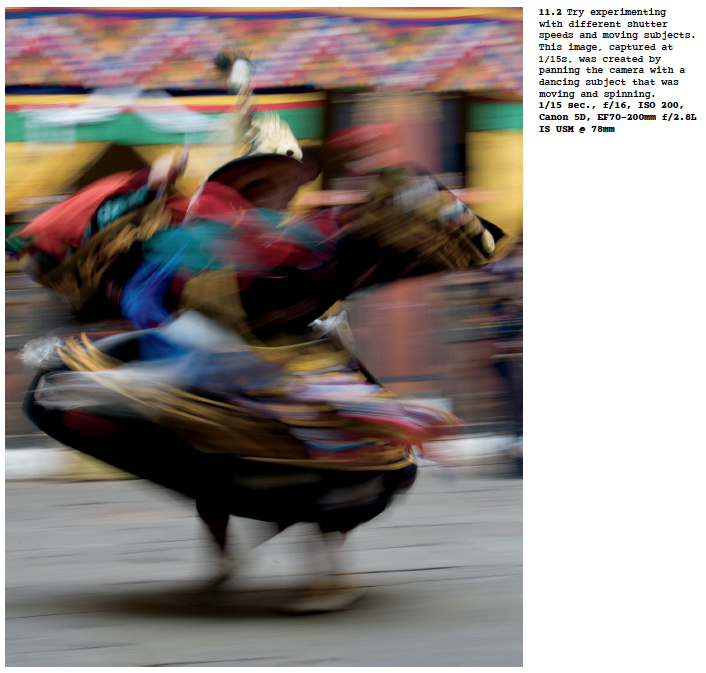
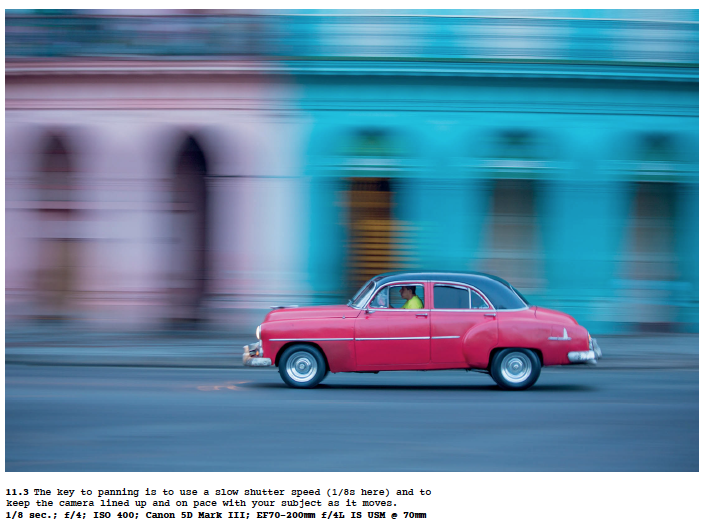
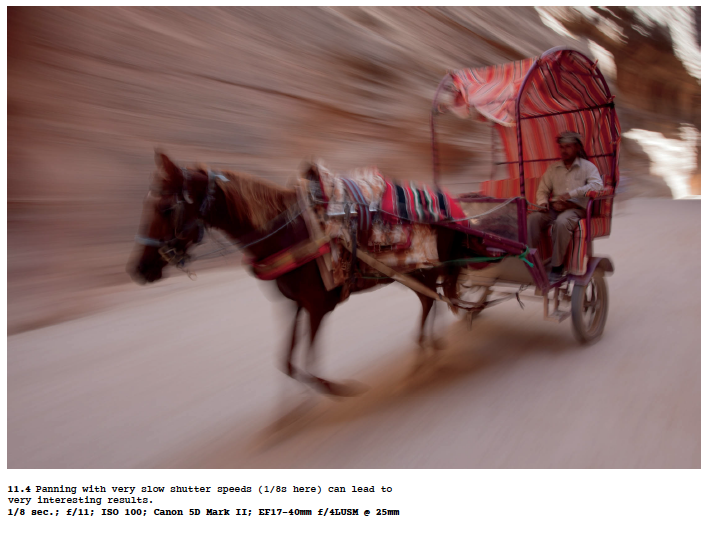
Subject Size Matters
The size of the blur will depend on the motion of the subject and the length of the exposure, but the relative size of the subject in the frame is also important. If a field of flowers is being blown about by a wind, flowers that are closest to the camera will appear to be more blurry than ones in the background. All the flowers may be moving the same amount, but the ones closest to the camera will appear the largest and thus show the most motion.
Subject Direction Matters
One more factor that comes into play in the world of blur is the direction of motion by the subject. Think about a fast-moving car going left to right across the frame. Its position is changing as it moves. Now consider that same car from a head-on point of view. As it approaches you, its position in the viewfinder of the camera doesn’t change, but its size does, getting larger as it gets closer.
If the car is far away, the rate of size change relative to the frame is smaller than if the car is close. Subjects moving toward or away from the camera do not show as much relative movement as subjects that move across the frame. As a result, you’ll need faster shutter speeds to stop action that happens across the frame, but you can use slower shutter speeds with action that approaches the camera.
The Best Slow Shutter Speed
Optimum results from slow shutter speeds is a matter of personal taste. Getting the perfect blur on a panning shot of car driving down the street or a wispy blur of a waterfall in the forest is often achieved though test shots at different shutter speeds.
Handholding the Camera
Blurry images caused by handholding the camera with too slow of a shutter speed are one of photography’s most common mistakes. The shutter speed you need to be at for a sharp image can depend on many variables. Shutter speeds below 1/60s are often referred to as slow, and will frequently result in blurry handheld images. Longer focal length lenses offer greater magnification, but will also magnify any movement. They require faster shutter speeds to ensure sharp images. The age-old rule of thumb is to use a shutter speed that is equal to 1/focal length. If you have a 200mm lens, you should use a shutter speed of 1/200s. A 500mm lens will need 1/500s, but a 15mm lens will only need 1/15s. Other factors may apply as well. Many cameras or lenses will have a stabilization system that may compensate for handheld movement and allow handheld use 2–5 stops slower that the standard rule of thumb. Cameras with smaller sensors or crop sensors magnify the image more than full-frame cameras, and thus magnify movement. Finally, there is the unique way that each of us holds a camera. Some of us are steadier than others. In the end, a little of trial and error will show the limits of your handholding ability.
Recommended Shutter Speeds
Recommending shutter speeds can be a tricky business because it depends on the motion of the subject, its size in the frame, and the direction of travel. On top of all of this, you must consider the style you prefer in your image. For instance, aviation photographers often like to have a little blur in the propellers of an airplane in flight. How much blur to give it is up to you. Experience will be the best guide, so get out there and test every shutter speed available to see which ones you prefer for the action that you like to capture.
